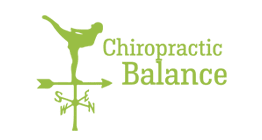Defining low back pain:
About 80% of us will experience back pain at some point in our life. The cause of back pain is varied. Sometimes it can be a physical source (which can often be seen as an abnormality on x-ray), yet sometimes no physical cause can be found yet you may be suffering from excruciating pain. Here are some treatment options:
Chiropractic treatment:
Even when the pain is in the lower back, the problem tends to be with the entire spine as it is all connected, says Victor Meir Nazarian, chiropractor. Chiropractors reduce pain by looking at your body as a whole and employ techniques (often including manipulation) to balance the nerves, muscles and bones around the spine. Patient reported satisfaction with Chiropractic care is very high as is relief from pain. Check-ups are often recommended even when you do not have pain, it can help keep your spine balanced and minimise future problems (just like a check-up at the dentist for your teeth).
Physiotherapy:
The lower back must move freely to prevent pain, yet most of us sit immobile for hours at a time, says Peggy Brill, author of two books on managing pain through exercise. That's why physiotherapists often work on the area of pain with muscle rehabilitation (eg. ultrasound) and prescribe movement and core strengthening, following a flare-up of back pain.
Stress relief:
Stress is the source of most low back pain, according to John Sarno, MD, professor of clinical rehabilitation medicine at New York University. Though Sarno doesn't dispute that the pain is real, he believes it stems from buried emotional issues that trigger tension in the body and ultimately deprive nerves and muscles of oxygen; relief comes through understanding this link and by learning to deal with negative emotions constructively.
Surgery:
"Think of this as the last resort," says Paul McCormick, MD, a professor of neurological surgery at Columbia University. Surgery may be necessary in some cases of curvature of the spine, narrowing of the cavity that surrounds spinal nerves, and nerve inflammation or disk degeneration—but these conditions are rare, McCormick says: "Ninety-nine out of one hundred patients will recover without surgery."
Our Recommendation:
The research is positive on chiropractic treatment, physiotherapy, and stress relief—they all help ease back pain. (As Paul McCormick says, with rare exceptions, surgery is unnecessary.) The key is to get your spine and body moving again as soon as possible after the pain hits, and then make sure you take steps to prevent a return. I see low back pain as a warning about overall health and fitness: If you're active, your body is flexible, your core strength is good, your getting good neutron and hydration and you're coping well with the emotional challenges in your life, your back probably won't bother you. Overlook one of those areas, however, and your back will let you know. And while the emotional link to back pain is controversial, there's no question that stress can play a part in muscle tension, especially in the lower back and hips, leading to trouble.
That's why at Chiropractic Balance, we specialise in getting your structure right, but make sure that we empower you with all of the tools to get your exercise, nutrition and stress levels sorted too!


